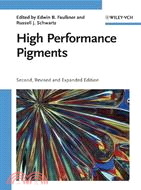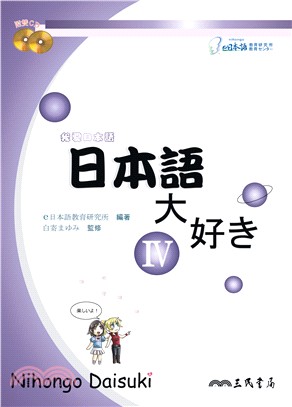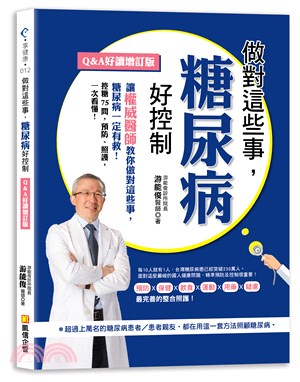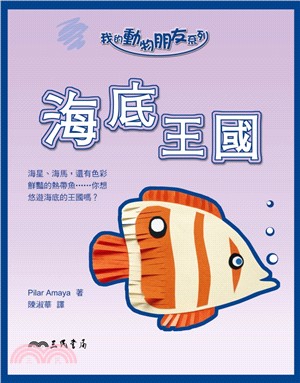High Performance Pigments
商品資訊
ISBN13:9783527314058
出版社:John Wiley & Sons Inc
作者:Faulkner
出版日:2009/01/14
裝訂/頁數:精裝/538頁
商品簡介
This book provides up-to-date information on the market for high performance pigments, synthesis, reaction mechanisms, physical and chemical properties, applications, regulatory affairs, toxicology and ecotoxicology. It is the only one on the market covering all high performance pigments in a single volume, offering both producers and users of High Performance Pigments the opportunity to review and update their understanding of latest technologies and market issues, together with assessing key regulatory affairs, in this specialty niche of the chemical industry.
The new edition has been revised and provides an up-to-date overview of scientific and technological aspects on high performance pigments. It addresses current issues such as environmental and health aspects, and regulatory affairs.
"Anyone seeking up-to-date information about the physical-chemical principles of high performance pigments and their special technical properties will find that this book gives an excellent survey of relevant aspects." Angewandte Chemie International Edition.
"This book will effectively help chemists, physicists, engineers and material scientists to stay ahead in this fast-changing field." Osterreichische Chemie
"... Wiley-VCH has assembled an international team of high performance experts... This is an enjoyable and stimulating read and beautifully produced. You will find it fascinating - don't miss it." Colour Chemistry
作者簡介
Russell J. Schwartz is Vice President, Colors Technology, at Sun Chemical Corporation. Russell earned both his B.S. and M.S. degrees in Chemistry from the State University of New York. He started with Sun Chemical in 1981 as a Research Chemist and advanced to positions of increasing responsibility. In 1999 he was promoted to his present function as Vice President of Colors Technology. In this role he directs research activities at Sun Chemical's US pigment laboratories in Cincinnati, OH and Bushy Park, SC, and in Køge, Denmark where he also serves on the Board of Directors. He has coauthored technical publications, lectured on pigment technology at various global industry events, received 21 patents, and in 2001 was honored by the National Association of Printing Ink Manufacturers with its Technical Associate Member Service award.
目次
List of Contributors.
Part I.
1. Introduction to Inorganic High Performance Pigments (Gunter Buxbaum).
1.1 Introduction.
1.2 Survey of Inorganic Pigments.
1.3 New Candidates on the Catwalk of Color.
1.4 Challenges for the Future.
2. Bismuth Vanadates (Hartmut Endriss).
2.1 Introduction.
2.2 Historical Background.
2.3 Manufacture.
2.4 Properties and Applications.
2.5 Applications.
2.6 Toxicology.
2.7 Ecology.
3. Cadmium Pigments (Paul Dunning).
3.1 Introduction.
3.2 Pigment History.
3.2 Raw Materials.
3.3 Chemistry of Cadmium, Selenium and Cadmium Sulfide.
3.4 Method of Pigment Manufacture.
3.5 Physical Properties.
3.6 Regulatory Issues.
3.7 Uses.
4. Cerium Pigments (Jean-Noel Berte).
4.1 Introduction.
4.2 Rare Earth Sulfides and the Origins of their Color.
4.3 Cerium Sulfide Pigment: Manufacture.
4.4 Properties and Applications.
4.5 Toxicology and Environmental Aspects.
4.6 Toxicological and Environmental Concerns during the Manufacturing Process.
5. Complex Inorganic Color Pigments: An Overview (James White).
5.1 Introduction.
5.2 Structures of CICPs.
5.3 Production of CICPs.
5.4 Titanate Pigments.
5.5 Aluminate Pigments.
5.6 Cobalt Aluminates.
5.7 Cobalt Chromium Aluminates.
5.8 Chromites and Ferrites.
5.9 Black CICPs.
5.10 Brown Pigments.
5.11 Green Chromites.
6. Titanate Pigments: Colored Rutile, Priderite, and Pseudobrookite Structured Pigments (John Maloney).
6.1 Introduction.
6.2 History.
6.3 Synthesis.
6.4 Applications.
6.5 Properties.
Part II.
7. Special Effect Pigments (Gerhard Pfaff).
7.1 Introduction.
7.2 Pearlescent and Interference Pigments.
7.3 Effect Pigments Formed by Coating of Metal Flakes.
7.4 Pigments Formed by Grinding a Film.
7.5 Pigments Based on Liquid Crystal Polymers.
8. Crystal Design of High Performance Pigments (Martin Schmidt).
8.1 Introduction.
8.2 Crystal Engineering of Organic Pigments.
8.3 Crystal Structure Determination.
8.4 Crystal Structure Calculation.
8.5 Control of Interfacial Properties Through Tailor-Made Additives.
Part III.
9. The Global Market for Organic High Performance Pigments (Fritz Brenzikofer).
9.1 Introduction.
9.2 The I999 Market for Organic High Performance Pigments.
9.3 The Producers of High Performance Pigments.
9.4 The Demand for HPP by Consumer Market Segments.
9.5 Demand Factors for HPPs.
9.6 Conclusions/Outlook.
10. Benzimidazolone Pigments and Related Structures (Hans-Joachim Metz and Frank Morgenroth).
10.1 Introduction.
10.2 Historical Background.
10.3 Method of Manufacture.
10.4 Typical Properties and Major Reasons for Use.
10.5 Pigment Grades, Discussion of Individual Pigments.
10.6 Pigment Manufacturers, Economics.
10.7 Safety, Health and Environmental Aspects.
11. Diketopyrrolopyrrole (DPP) Pigments (Olof Wallquist and Roman Lenz).
11.1 Introduction.
11.2 Syntheses.
11.3 Molecular Structure and Properties.
11.4 Chemical Properties.
11.5 Solid-State Properties.
11.6 Conventional Applications.
11.7 Nonconventional Applications.
12. Dioxazine Violet Pigments (Terence Chamberlain).
12.1 Introduction.
12.2 Synthesis.
12.3 Pigmentation and Properties.
12.4 Recent Developments.
13. Disazocondensation Pigments (Fritz Herren).
13.1 Introduction.
13.2 Historical Background.
13.3 Chemistry.
13.4 Synthesis and Manufacture.
13.5 Characterization, Properties, Application.
14. Isoindoline Pigments (Volker Radtke, Peter Erk, and Benno Sens).
14.1 Introduction.
14.2 Historical Background.
14.3 Methods of Manufacture.
14.4 Typical Properties and Major Reasons for Use.
14.5 Crystal Structures of Isoindoline Pigments.
14.6 Pigment Manufacturers; Economics.
14.7 Toxicology and Ecology.
15. Isoindolinone Pigments (Abul Iqbal, Fritz Herren, and Olof Wallquist).
15.1 Introduction.
15.2 Chemistry.
15.3 Physicochemical Properties.
15.4 Commericial Products and Applications.
16. Perylene Pigments (Brian Thompson).
16.1 Definition of Perylene Pigments.
16.2 Synthesis of Perylenes.
16.3 The Conditioning of Perylene Diimide Pigments.
16.4 Mixed Crystals and Solid Solutions of Perylene Diimide Pigments.
16.5 Drying of Perylene Pigments.
16.6 Physical Chemistry and Color Physics of Perylene Pigments.
16.7 Perylene Pigments and their Applications.
16.8 Perylenes as Functional Colorants.
16.9 Current Producers.
16.10 Pricing Trends and Economics of Use.
16.11 Health, Safety, and Environmental Considerations.
17. Phthalocyanines – High Performance Pigments and Their Applications (Masao Tanaka).
17.1 Introduction.
17.2 Application of Optical Properties.
17.3 Application of Optoelectronic Properties.
17.4 Application of Catalysis.
17.5 Conclusion.
18. Quinacridone Pigments (Terence R. Chamberlain (modification of original chapter by Edward E. Jaffe).
18.1 Introduction.
18.2 Historical Background.
18.3 Quinacridone Syntheses.
18.4 Recently Introduced Quinacridone Products.
18.5 Structural Data and Spectra.
18.6 Polymorphism.
18.7 Substituted Quinacridones.
18.8 Photostability and a Suggested Mechanism.
18.9 Quinacridonequinone.
18.10 Other 6,I3-Disubstituted Quinacridones.
18.11 Solid Solutions.
18.12 Conditioning and Surface Treatment of Quinacridones.
18.13 Applications.
18.14 Health and Safety Factors.
18.15 Business Aspects.
19. Quinophthalone Pigments (Volker Radtke).
19.1 Introduction.
19.2 Historical Background.
19.3 Methods of Manufacture.
19.4 Typical Properties and Major Reasons for Use.
19.5 Pigment Grades and Discussion of individual Pigments.
19.6 Pigment Manufacturers: Economics.
19.7 Toxicology and Ecology.
20. Imidazolone-Annellated Triphenedioxazine Pigments (Martin U. Schmidt).
20.1 Introduction.
20.2 On the Structure of Pigment Violet.
20.3 Imidazolone-Annellated Triphenedioxazine Pigments.
Part IV.
21. Chemical and Physical Characterization of High Performance Organic Pigments (Constantinos Nicolaou).
21.1 Introduction.
21.2 Visible Spectrophotometry.
21.3 Applications of FT-IR Spectroscopy.
21.4 Mass Spectrometry Techniques.
21.5 High-Performance Liquid Chromatography.
21.6 Powder X-ray Diffraction.
21.7 Particle Sizing Techniques.
21.8 Thermal Analysis and Decomposition Temperatures of HPOPs.
21.9 Product Safety and Environmental Testing of HPOPs.
22. Regulatory Affairs for High Performance Pigments: North America (Harold F. Fitzpatrick, Esq. and Glenn C. Merritt, Esq.).
22.1 Introduction.
22.2 Toxic Substances Control Act.
22.3 Canada.
22.4 Mexico.
22.5 Toxic Release Inventory Reporting.
22.6 Regulation of de minimis Levels.
22.7 Food and Drug Administration.
22.8 Color Pigments in General.
22.9 PBT-TRI Rules.
22.10 Nanotechnology and Regulation.
22.11 High Production Volume (HPV) Substances.
22.12 Phthalocyanine Pigments.
22.13 Quinacridone Pigments.
22.14 Carbazole Violet Pigments.
22.15 Perylene Pigments.
22.16 Inorganic Pigments.
22.17 Conclusion.
23. Regulatory and Legislative Aspects of Relevance to high Performance Pigments: Europe (Eric Clarke and Herbert Motschi).
23.1 Introduction.
23.2 The European Union and its Institutions.
23.3 The Major EU Directives Governing Chemical Control.
23.4 National Regulations.
23.5 Future Enlargement of the EU (PHARE and similar programs).
23.6 Nonregulatory Initiatives.
23.7 Confidentiality.
23.8 Availability of Information on Current Regulations.
23.9 Future Outlook.
24. Infrared Reflecting Complex Inorganic Colored Pigments (Terry Detrie and Dan Swiler).
24.1 Introduction.
24.2 Background/Physics.
24.3 Measurement.
24.4 Pigments.
24.5 Formulation with IR Pigments.
24.6 Market Driving Forces.
24.7 Conclusions.
25. Toxicology and Ecotoxicology Issues with High Performance Pigments (Robert Mott (revision of original chapter by Hugh M. Smith).
25.1 Introduction.
25.2 Recent Toxicological Testing of High Performance Pigments.
25.3 Past Confusion in Assessment of HPPs.
25.4 Current Programs for Toxicological and Ecotoxicological Assessment of HPPs.
25.5 The Way Ahead.
Appendix.
Index.
主題書展
更多書展本週66折
您曾經瀏覽過的商品
購物須知
外文書商品之書封,為出版社提供之樣本。實際出貨商品,以出版社所提供之現有版本為主。部份書籍,因出版社供應狀況特殊,匯率將依實際狀況做調整。
無庫存之商品,在您完成訂單程序之後,將以空運的方式為你下單調貨。為了縮短等待的時間,建議您將外文書與其他商品分開下單,以獲得最快的取貨速度,平均調貨時間為1~2個月。
為了保護您的權益,「三民網路書店」提供會員七日商品鑑賞期(收到商品為起始日)。
若要辦理退貨,請在商品鑑賞期內寄回,且商品必須是全新狀態與完整包裝(商品、附件、發票、隨貨贈品等)否則恕不接受退貨。






















